In this, the second post in the series, I’m featuring the churches that we visited just a few weeks ago. The plan was to walk a circuit from London Bridge station, taking in half a dozen or so churches. However, it was too tempting to go off piste!
We began by crossing London Bridge, and walking down the steps to the riverside path.

The first church on our list is right here, although of course you have to look for it.
St Magnus the Martyr
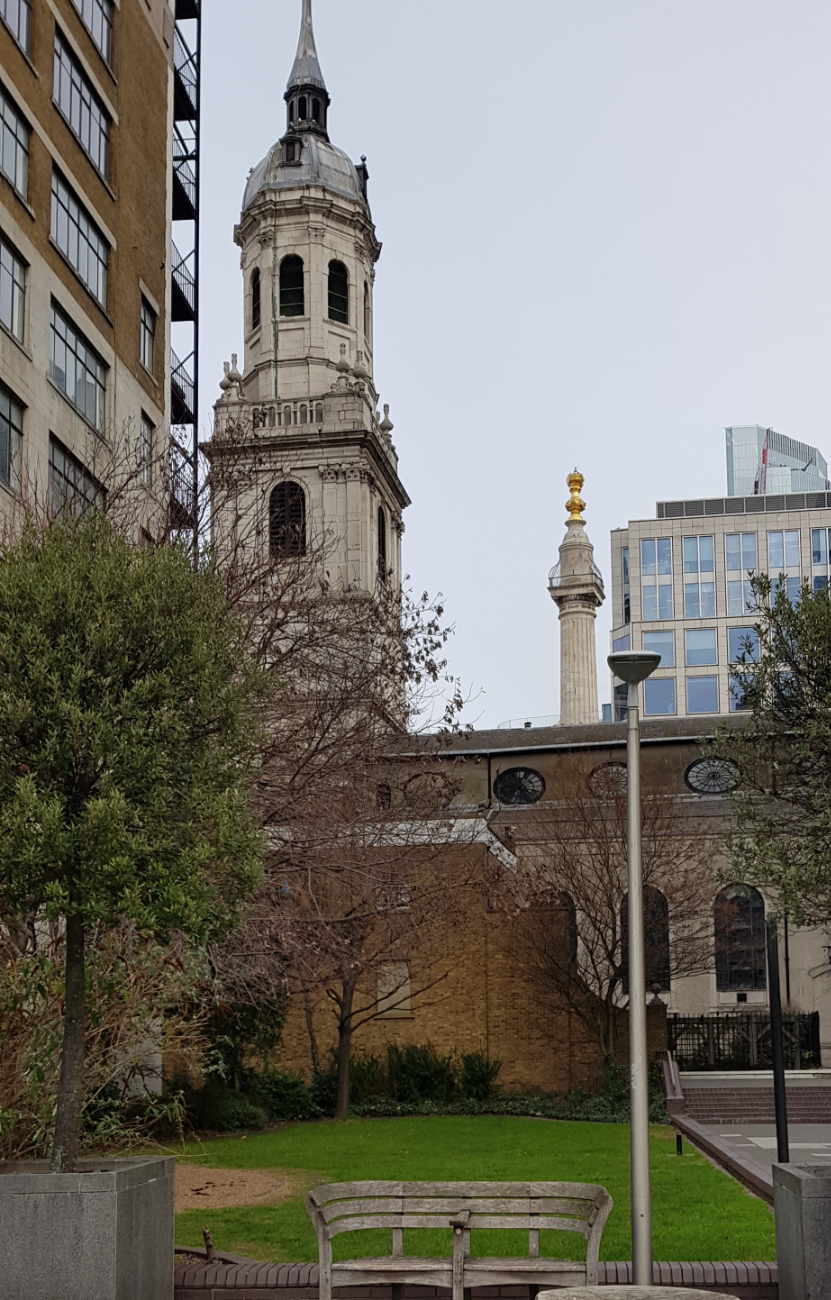
The church of St Magnus the Martyr sits at what was once the entrance to London Bridge, long before the present bridge was built. St Magnus was the earl of Orkney, who was canonised in the 12th century. The church was one of the first to be destroyed by the Great Fire of London in 1666, as it’s just 300 yards from Pudding Lane where the fire started. However, it was rebuilt under the direction of Christopher Wren and at a cost of just over £9,500 was one of Wren’s most expensive churches!

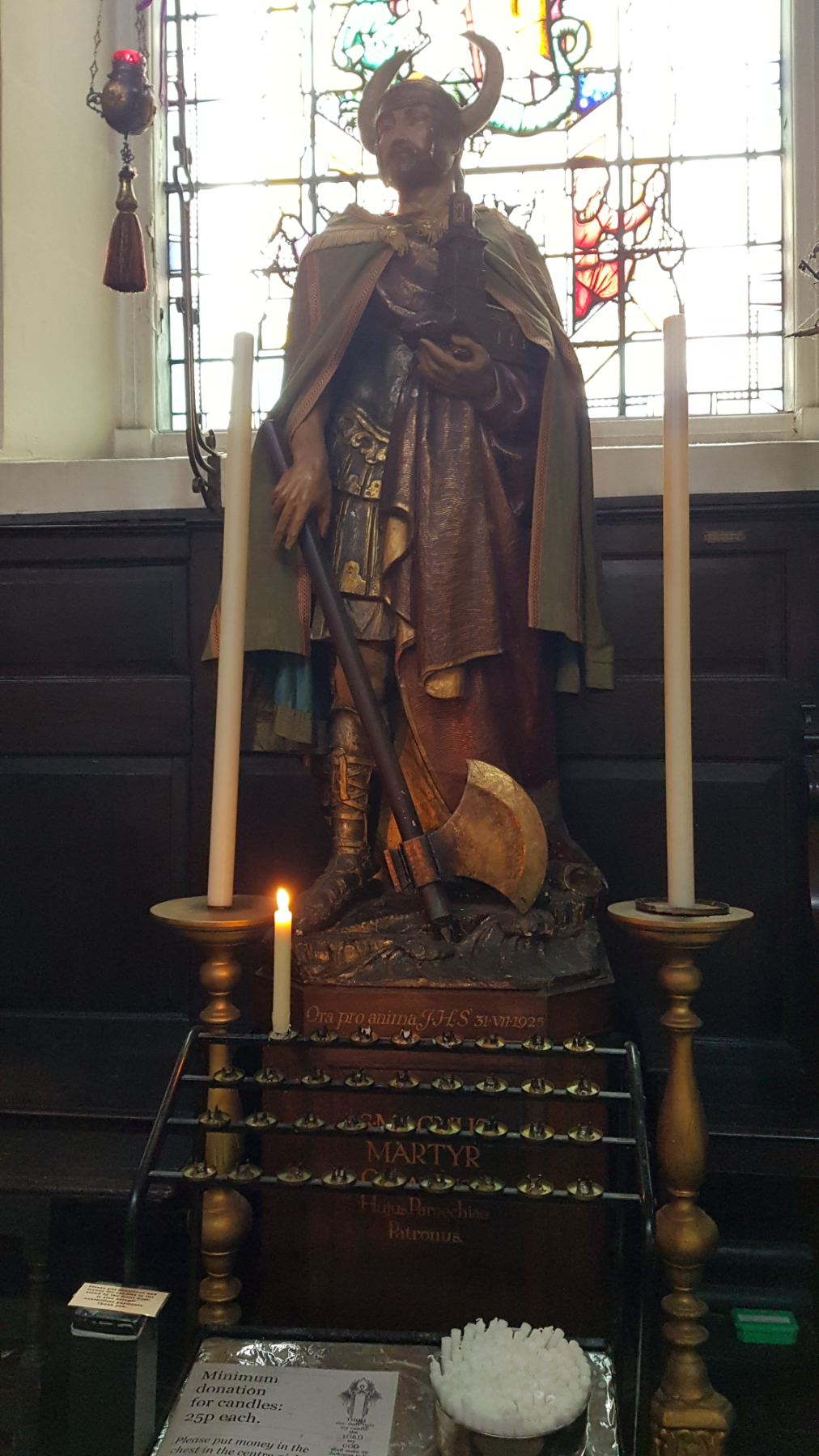
A few yards from the church is the Monument, built to commemorate the Fire. We climbed to the top on our last visit, and the views are great. As with so many older buildings in London it’s dwarfed by everything around it and you don’t really see it until it’s on top of you, when it suddenly looks huge!

St Mary at Hill
Just a few streets away tucked down one of the narrow lanes that lead to the river is St Mary-at-Hill, clearly a popular concert venue and no wonder with its light and airy interior and huge windows…


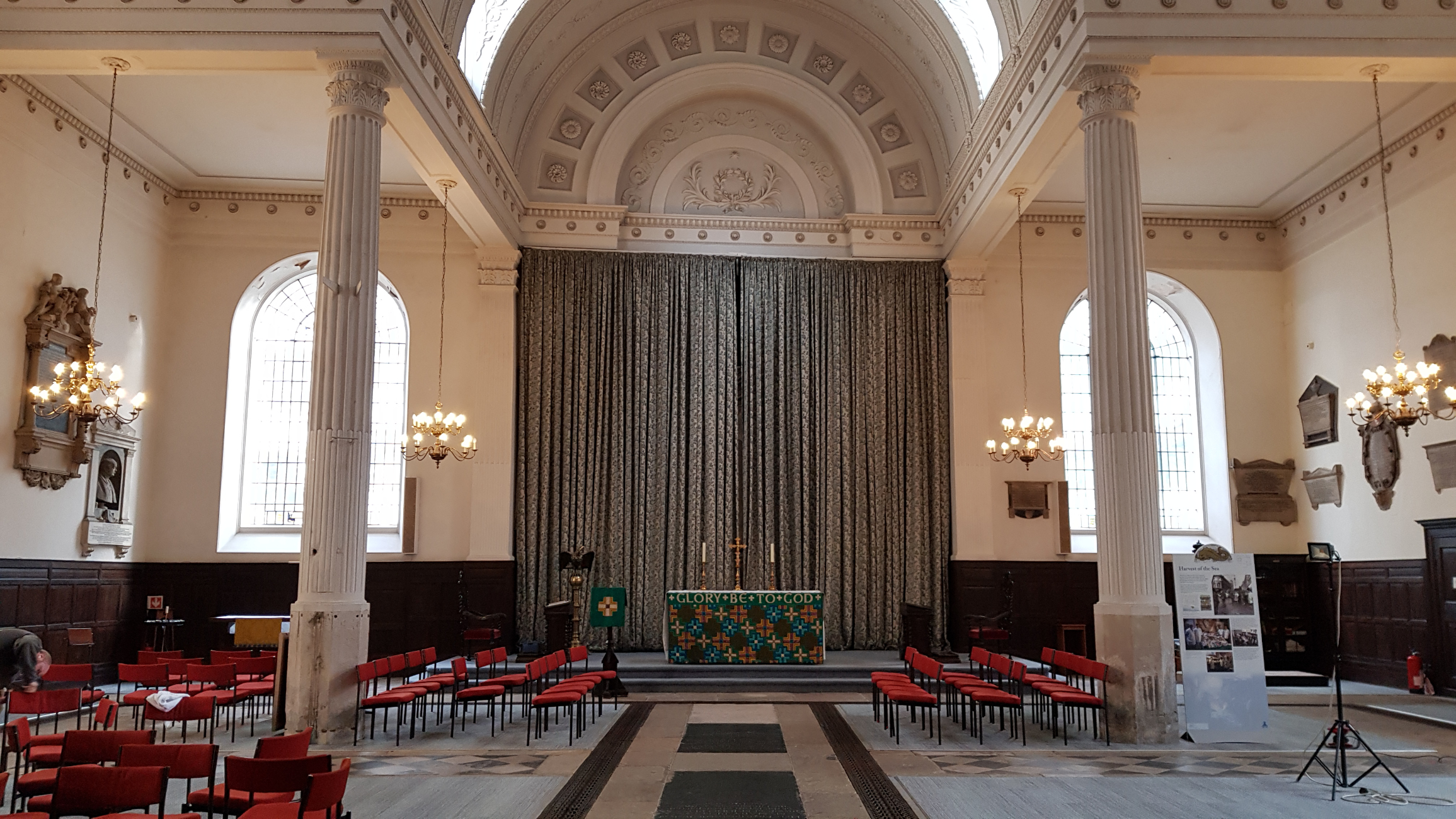

For more detail about St Mary-at-Hill here’s a very interesting blog post.
St Dunstan in the East
This was showing as a ‘ruin’ on the map. Intriguing! And indeed just the tower and a few walls remain. It was destroyed in the Second World War and turned into a park in 1967. The place is a little oasis, popular with local workers eating their lunch.

So far so good, but behind the tower…

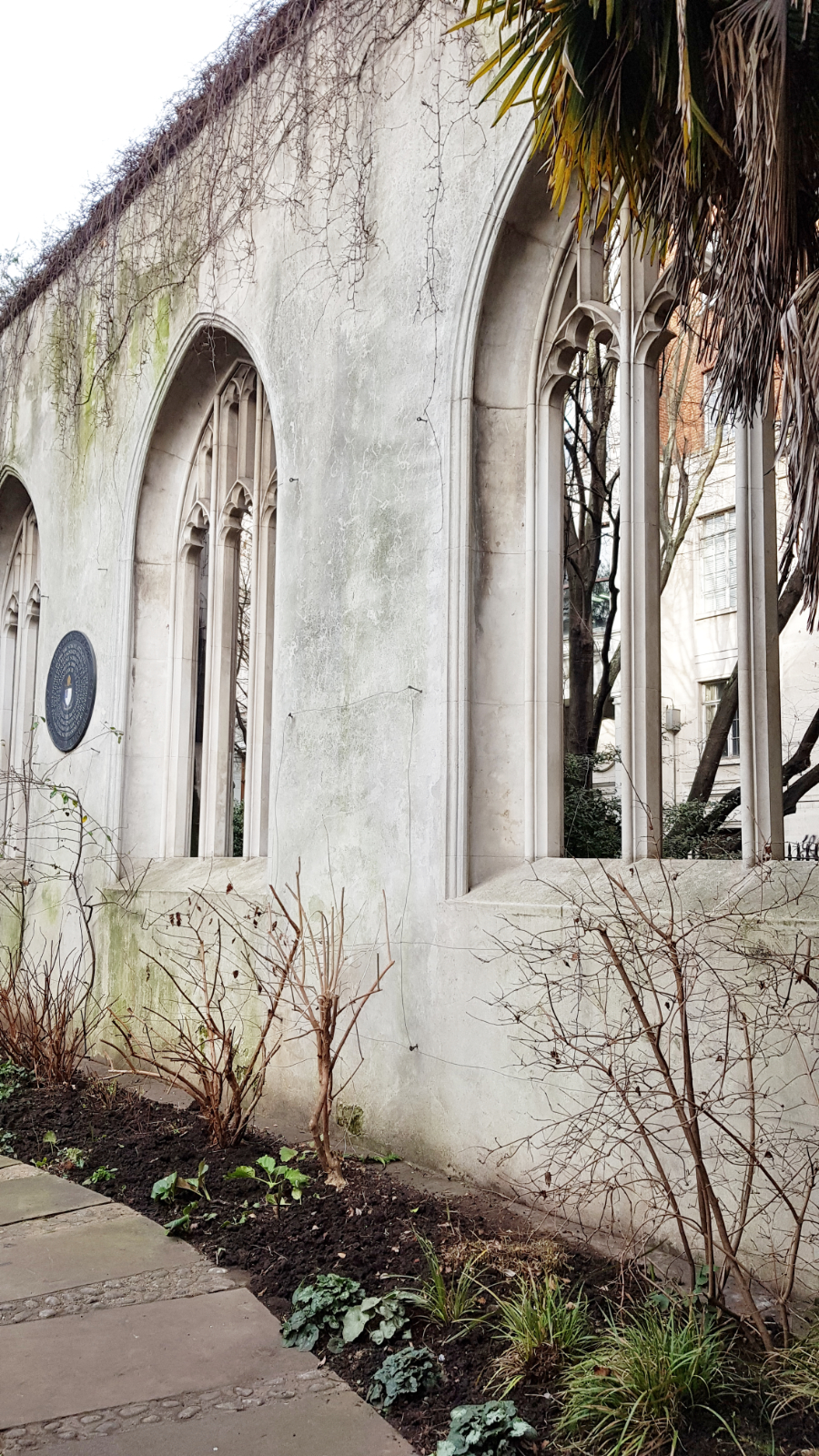

A point of interest for me personally was the connection between this parish church and St Dunstan’s College in Catford, which used to be closely associated with Prendergast, the girls’ school where I was a pupil. I remember it mostly for its excellent school discos, and it being a boys’ school of course us girls were more than welcome!
All Hallows by the Tower
As the name suggests, this church is spitting distance from the Tower of London. It’s popular with visitors, with a great deal of interesting history. It has a big, sumptuous interior and a fascinating museum in the crypt.

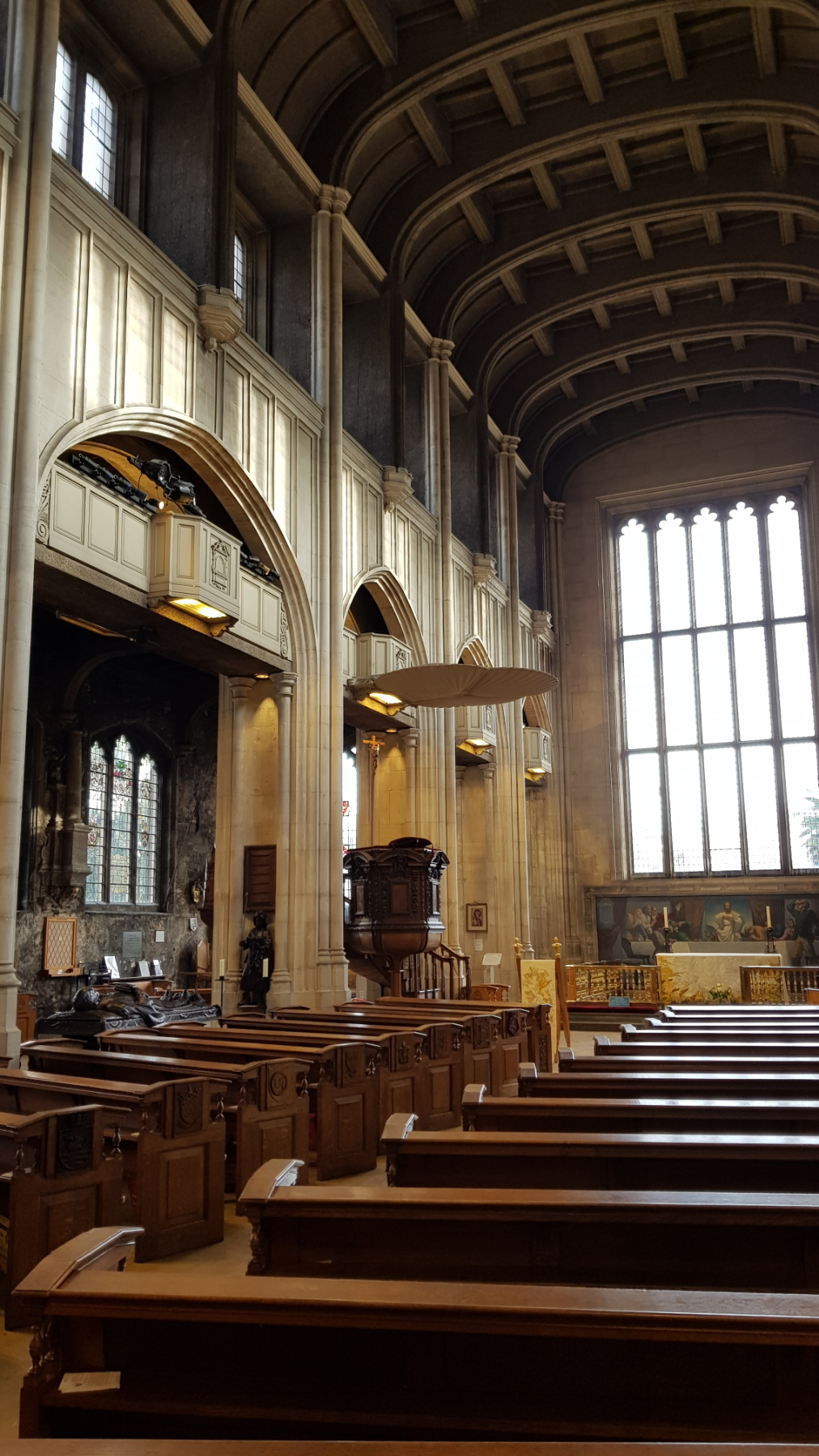
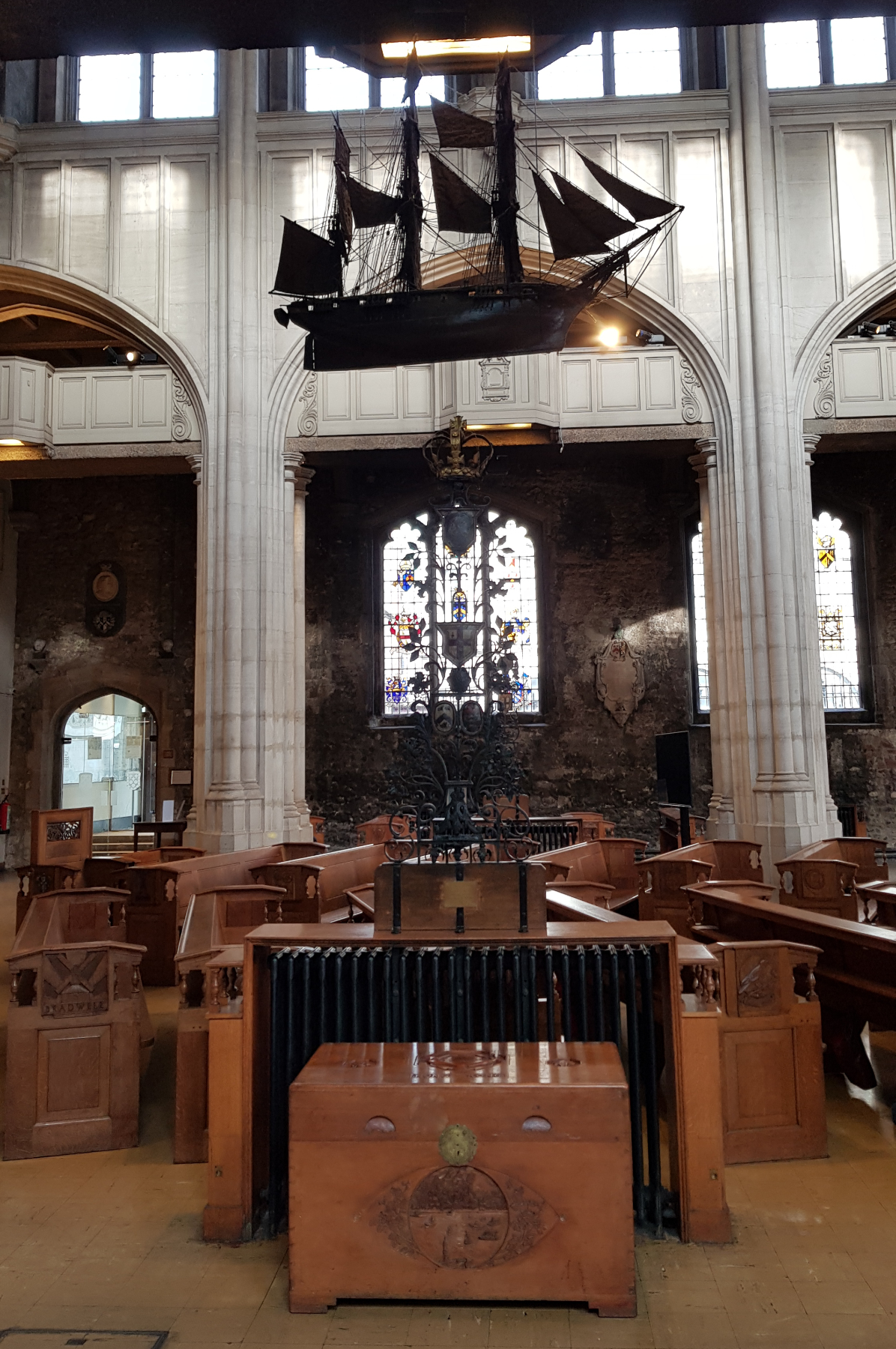
St Andrew Undershaft
Quite a few city churches are run by organisations that prefer not to open them to the public, or only occasionally, and one of these is St Andrew Undershaft.

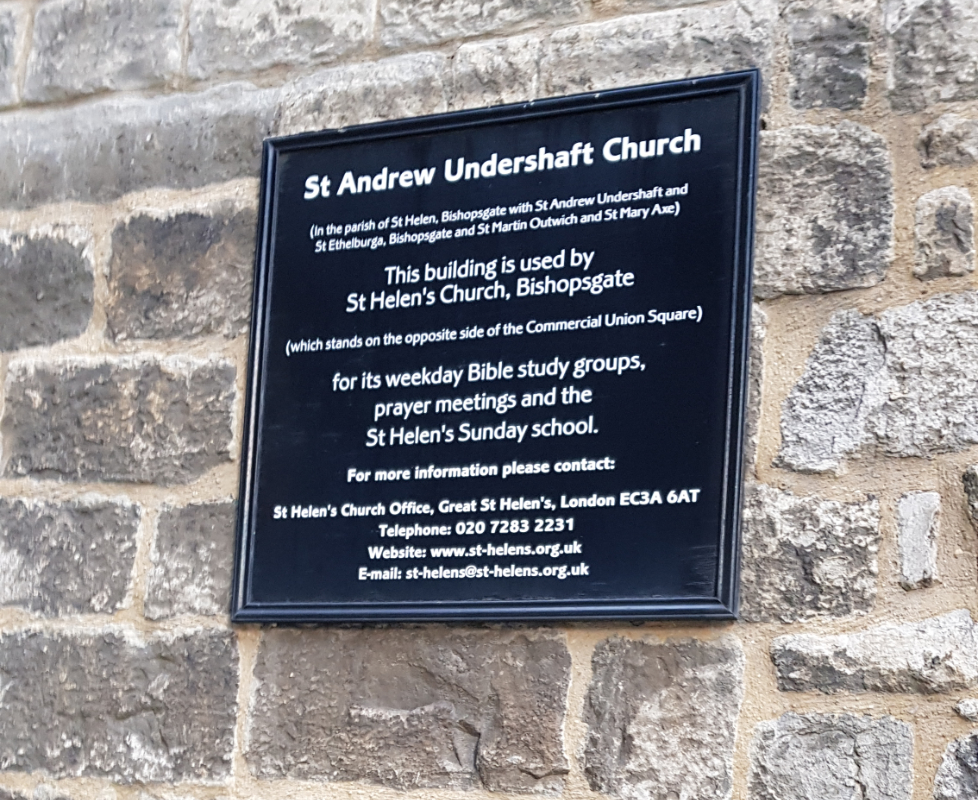
At this point we meandered westwards along Fenchurch Street, down onto Cannon Street and towards St Paul’s we veered off onto Watling Street (yes, a portion of the Roman road of that name) to visit what has become one of my favourite churches.
St Mary Aldermary
What can I say that does it justice? The ceiling alone is stunning. There’s actually a decent-sized cafe operating at the back of the nave, and you’re welcome to eat your food at the tables or in the pews. It’s reputedly the oldest of the city churches dedicated to Mary, and the only Wren church built in the old-fashioned Gothic style, because that’s what the parishioners requested. Today it’s home to Moot, a contemplative church community. There’s a lot of information about the history of the building here.

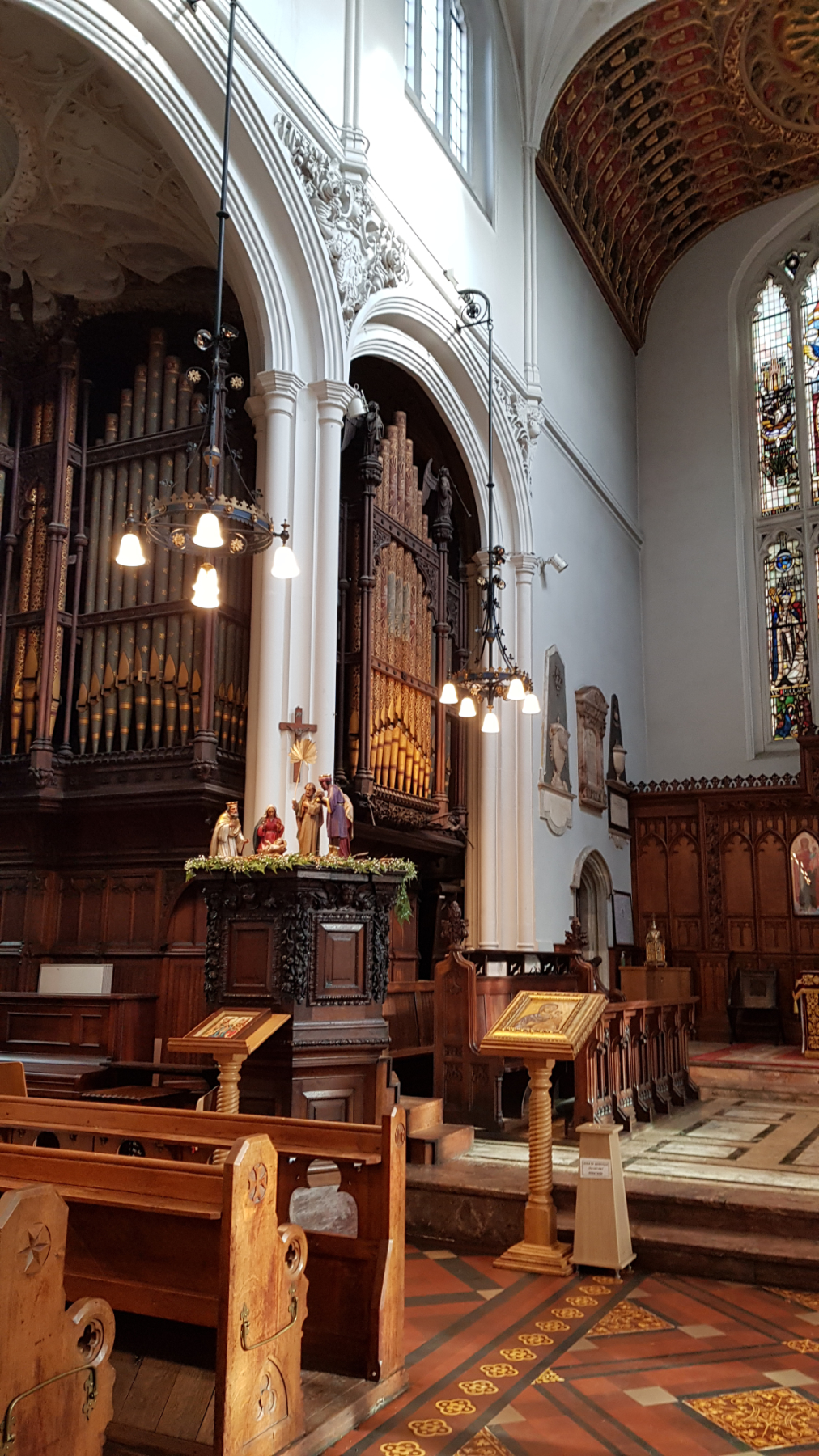

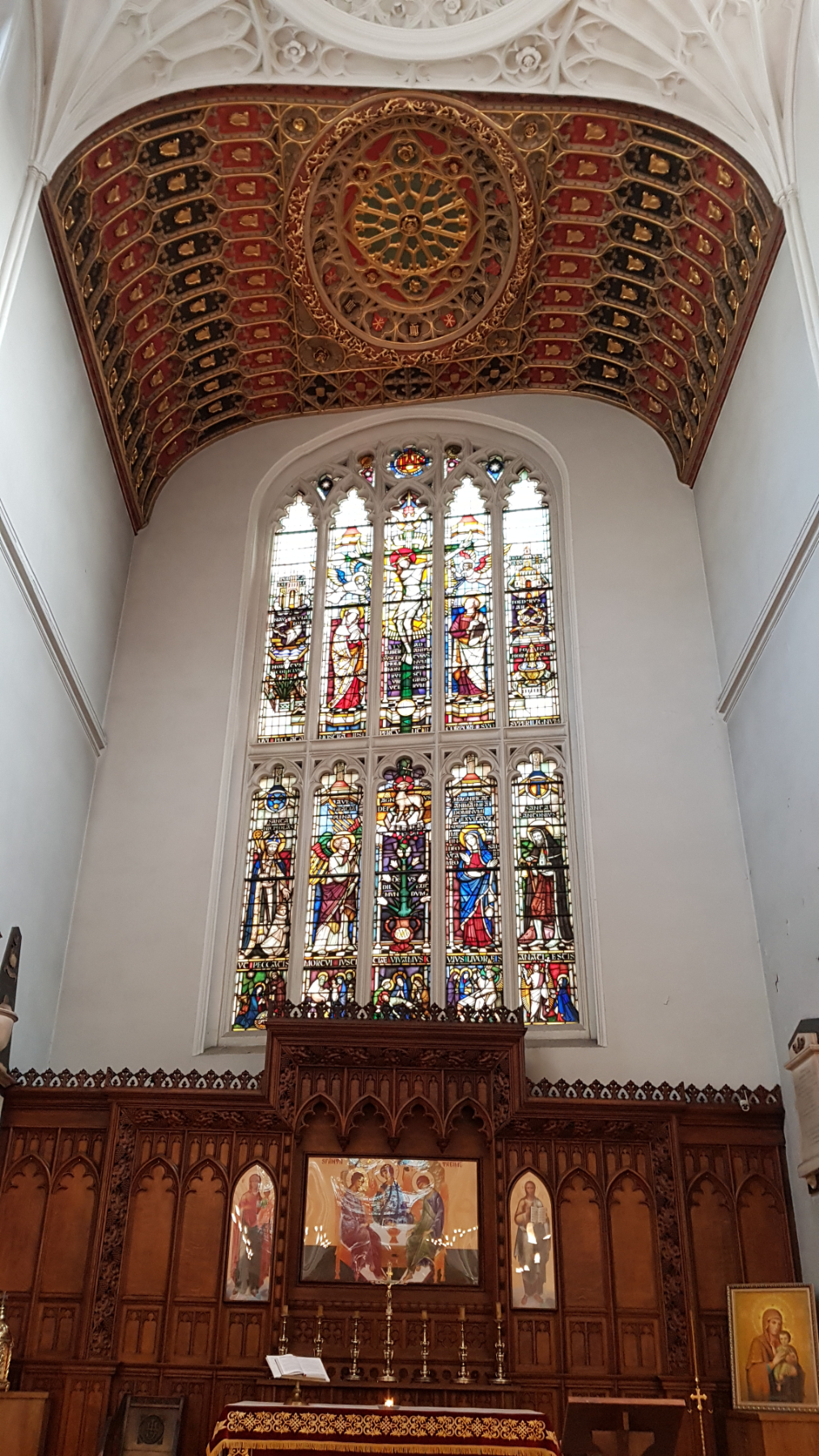
St Martin within Ludgate
Just a bit beyond St Paul’s Cathedral, with a typically modest entrance onto the road that reminds me of churches in Rome that you come across down side streets, which turn out to be hiding huge basilicas, is St Martin within Ludgate. The church allegedly sits above the foundations of original walls of the city, both medieval and Roman. Suprisingly quiet inside, although a little dark. It features a black and white chequered floor typical of Wren churches.




St Vedast alias Foster
In a small lane just off Cheapside is a church with the strangest of names. We’re told that St Vedast was a French saint, and because there was some concern that people wouldn’t be able to pronounce the name, a familiar name Foster was added as an ‘alias’!
This is a glamorous church. The pews face each other in ‘collegiate’ fashion across a wide central space…



Outside, a plaque lists the ‘ancient parishes’ that were united with St Vedast in 1956.

Along Cheapside we came to another famous church, home to the Bow Bells of cockney fame.
St Mary le Bow
Tradition has it that you’re a true cockney if you were ‘born within the sound of Bow Bells’. You might think that refers to the church at Bow in East London, but no, it’s this one, St Mary le Bow. It’s worth remembering that in days of yore the bells here would have been heard over a much wider distance than now. It’s an imposing church, with a lovely square beside it.




St Stephen Wallbrook
This distinctive church frequently appears in TV or films. It’s one of Wren’s masterpieces which he worked on at the same time as St Paul’s. It’s also another ancient site; the Romans had a temple to Mithras here, on the banks of the Wallbrook, now one of London’s subterranean rivers. Of note are the the central altar by Henry Moore, memorials to notable people around the walls and the huge dome, flooded with light.
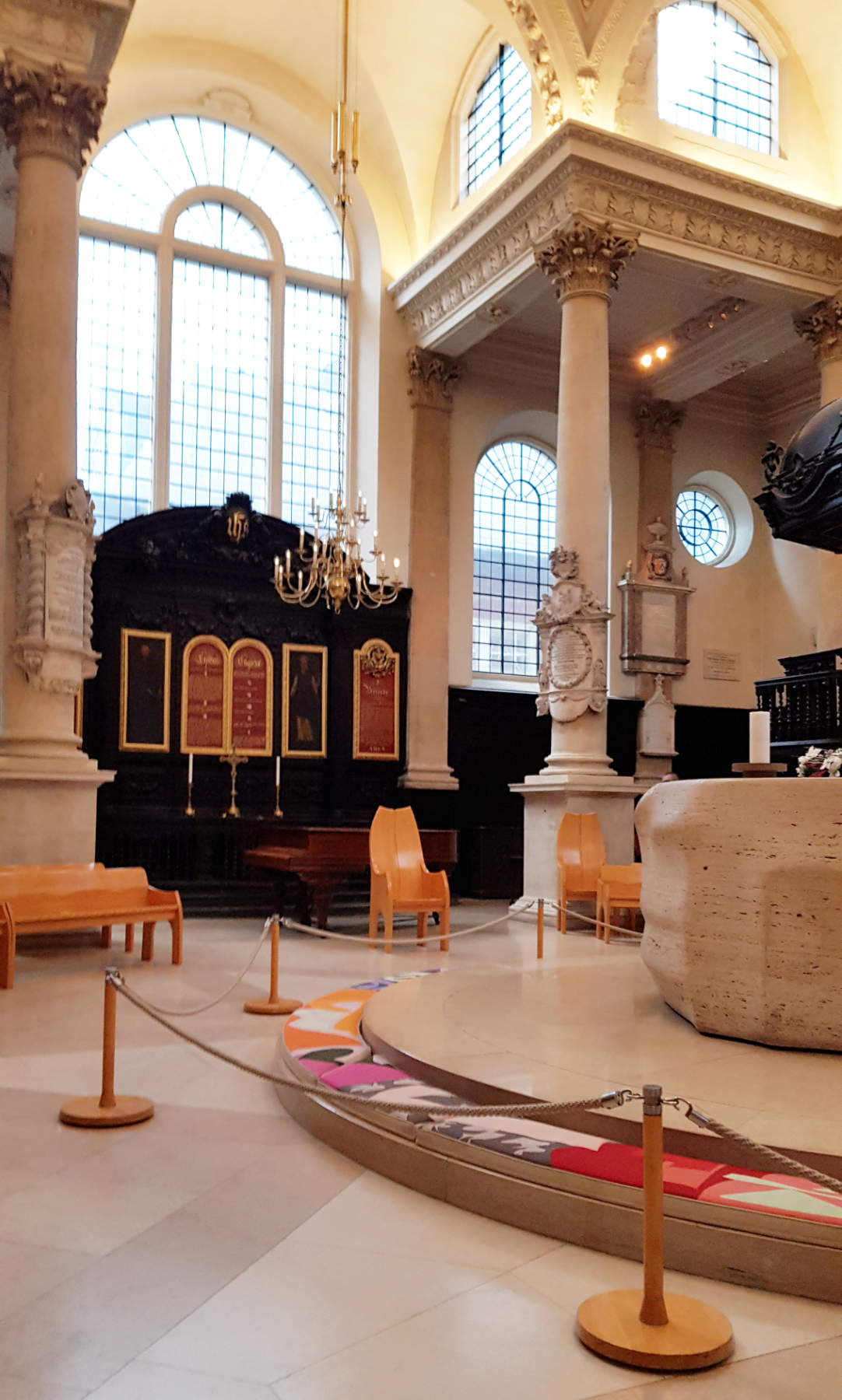


By this time we were tired to say the least… but there’s more to come!
Other posts in this series:
Discover more from An Eastbourne Diary
Subscribe to get the latest posts sent to your email.
[…] London City Churches, part 2 […]
[…] London City Churches part 2 […]